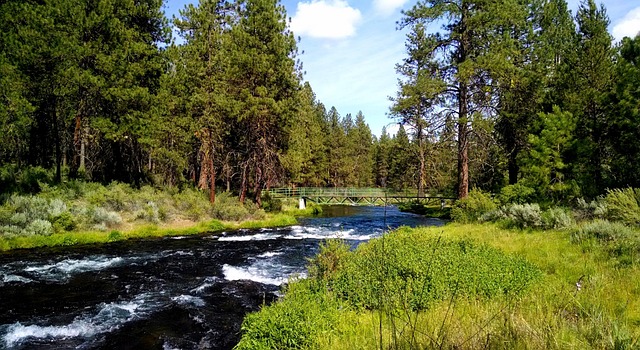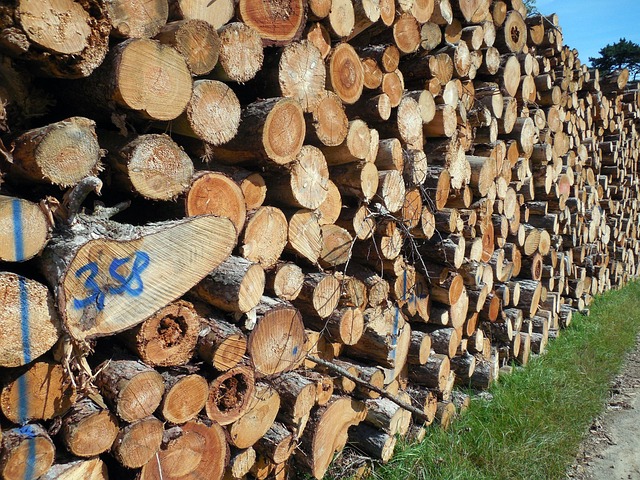Lane County's logging history is a defining aspect of its past and present. In the late 19th and early 20th centuries, it became a hub for the thriving timber industry, attracting entrepreneurs who established powerful sawmills and created jobs. This era produced prominent "timber barons" and a skilled workforce centered on forest management. Over time, environmental concerns shifted practices towards sustainability, with Lane County now recognized for its modern forest management techniques. Today, advanced technology combines with traditional expertise to preserve Oregon's iconic forests while meeting national lumber demands, showcasing the harmonious blend of history and innovation in Lane County's timber industry.
“Lane County, Oregon, boasts a rich historical connection with its timber industry, dating back to the late 19th century. This article explores the evolution of logging in the region, from its humble beginnings to the establishment of powerful timber barons and bustling sawmills. We delve into the rise and fall of these industrial giants and the modern era of forest management.
The legacy left by Lane County’s timber workforce is profound, shaping the economic and cultural landscape while also highlighting the importance of sustainable practices for future generations.”
- A Historical Overview: Lane County Logging and Timber Industry
- The Rise of Timber Barons and Sawmills in Lane County
- Modern Forest Management Practices and the Legacy of Lane County's Timber Workforce
A Historical Overview: Lane County Logging and Timber Industry

Lane County’s logging history is intertwined with its rich natural resources and has played a significant role in shaping the region’s economy. The timber industry boomed in the late 19th and early 20th centuries, attracting ambitious entrepreneurs and leading to the rise of powerful timber barons. These industrialists established massive sawmills throughout the county, transforming lush forests into valuable timberlands. Oregon’s abundance of old-growth forests provided a constant supply of lumber, driving economic growth and employment opportunities for the local workforce.
The Lane County timber industry employed thousands of people, creating a robust community centered around forest management and logging operations. Sawmills became the backbone of local economies, with communities like Eugene, Springfield, and Corvallis thriving on the back of this primary sector. However, as time progressed, sustainable practices and environmental concerns began to take center stage, influencing a shift in forest management strategies within Lane County.
The Rise of Timber Barons and Sawmills in Lane County

In the late 19th century, Lane County emerged as a powerhouse in Oregon’s timber industry. The discovery of vast, unspoiled forests attracted ambitious entrepreneurs who saw an opportunity to capitalize on the region’s rich natural resources. This period marked the rise of timber barons, powerful figures who controlled vast logging operations and sawmills across the county. These early industrialists established a legacy that would shape Lane County’s economic landscape for generations to come.
The establishment of numerous sawmills along the coast and inland valleys fueled the local economy and attracted a diverse workforce. Skilled loggers, millworkers, and forest managers from various backgrounds flocked to the region, contributing to a vibrant community centered around the timber industry. Efficient forest management practices were implemented, ensuring sustainable harvesting while meeting the growing demand for lumber in a rapidly expanding nation.
Modern Forest Management Practices and the Legacy of Lane County's Timber Workforce

In the heart of Oregon’s lush forests, Lane County boasts a rich logging history that has shaped its identity and economy. The timber industry has been a cornerstone of the local community for generations, fostering a robust workforce dedicated to the art and practice of forest management. Historically known for its towering trees and abundant resources, the county became a haven for timber barons who built their fortunes on the back of Oregon’s vast forests. These pioneers laid the groundwork for modern forest management practices, ensuring sustainable harvesting methods that preserve the region’s natural beauty.
Today, Lane County’s sawmills continue to hum with activity, reflecting evolving industry standards. Advanced technology and scientific forest management strategies have replaced the traditional logging practices of old. Despite these changes, the legacy of the timber workforce remains intact. Skilled foresters and loggers in Lane County embrace a deep connection to the land, carrying forward the traditions of their ancestors while adapting to contemporary environmental stewardship. This harmonious blend of history and innovation ensures that the timber industry in Lane County prospers, meeting modern demands while preserving Oregon’s iconic wilderness for future generations.
